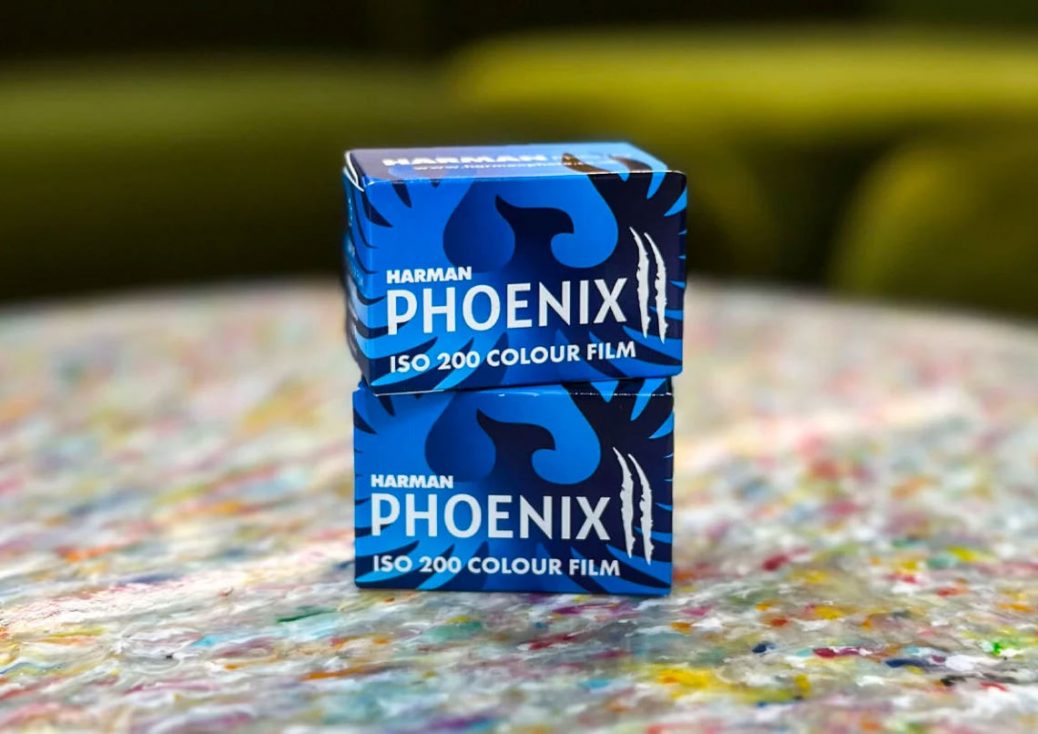Harman Introduces Phoenix II Revised Experimental Color Film
Harman has released Phoenix II, a revised color negative film that replaces the original Phoenix 200 launched in December 2023. Unlike many contemporary releases that repackage existing emulsions, Phoenix II represents a new formulation developed entirely in-house at Harman’s Mobberley facility in the UK.
The original Phoenix 200 was Harman’s first attempt at a color film built from the ground up, rather than a modification of a pre-existing stock. While it was notable for its saturated colors, strong halation, unpredictable tonal shifts and coarse grain for an ISO 200 film, it was also technically limited. It had a narrow exposure latitude and high contrast, which made accurate metering and handling more difficult. Although marketed as experimental, it gained a following among photographers drawn to its erratic and stylized rendering.
Phoenix II marks a technical and aesthetic departure from its predecessor. “Harman Phoenix represented a significant milestone in the long history of our company and was a solid starting point on our color journey,” Greg Summers, Managing Director at Harman, says. “Since then, our teams have been working very hard behind the scenes, taking what we have learnt, alongside valuable feedback from the film community, to further develop, optimise, and refine this into a brand-new film. This second-generation film is very different from the original. Each layer and component has been redesigned and reengineered into a completely new formulation. New dyes, couplers, and even an experimental layer construct!”
The Phoenix II is rated at ISO 200 and designed for standard C41 processing. While it retains some of the original’s character—such as the absence of an orange mask and the presence of a purplish base—it now delivers more consistent and manageable results. Harman notes that Phoenix II is easier to scan, an important consideration for both home users and professional labs. It is not intended for push processing, and reciprocity compensation is required for exposures longer than one second.
The film performs well across a variety of lighting conditions, with optimal results reportedly achieved when exposed between ISO 100 and 200. Initial feedback indicates an increased ability to handle scenes with broader highlight and shadow information.
Here are some sample pictures, courtesy of Harman:
Phoenix II is available in 35mm (36 exposure) and 120 formats, priced at approximately $13.99 and $11.99 respectively, though actual pricing may vary by region. The original Phoenix 200 is no longer in production, though Harman has indicated the possibility of a reissue if demand justifies it.










